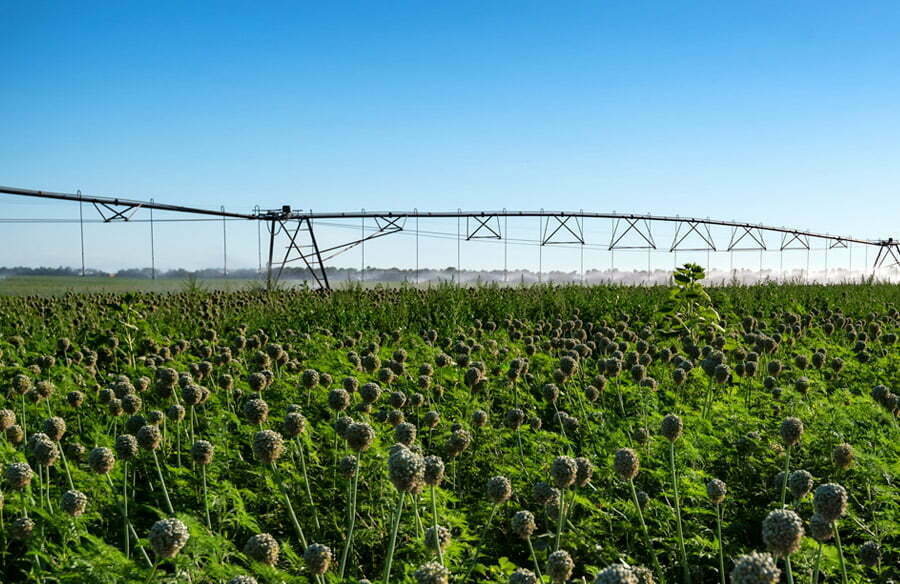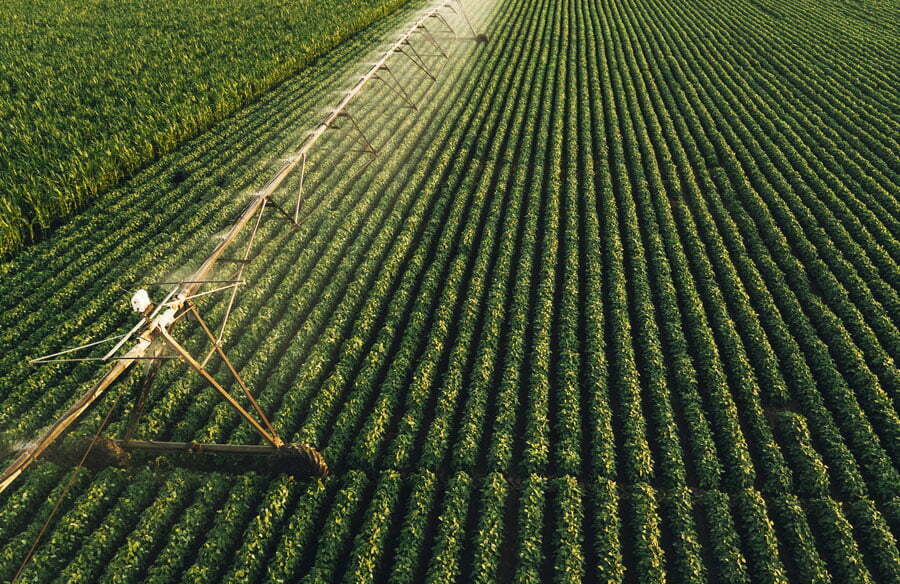What is regenerative agriculture?
There’s a lot of change going on in the world as humans respond to immense challenges in many areas of life. One area in need of massive transformation is the way we grow food, the quality of the food we consume, and the resources we dedicate to agriculture. Regenerative agriculture is a solution for our farming, food and health issues. It’s a coherent response by farmers, gardeners, and consumers to move us from conventional farming practices and degradation of land to ways of producing and consuming food that gets better every year, instead of worse.
Regenerative agriculture is a movement with many diverse and yet aligned interests. It supports soil health, boosts biodiversity, increases carbon sequestration, and improves water utilization. These strategies go far beyond sustainable agriculture and allow us to accumulate benefits overtime. When acting synergistically, these practices enhance the growth of food and improve the quality of the harvest.
Improve Soil Health
The foundation of regenerative agriculture is the strength of soil. An increase in soil health and fertility is an increase in crop health. Soil fertility is the soil’s ability to sustain plant growth and provide a favorable habitat for a sustainable and consistent yield of high quality crop. Soil health can be increased through regenerative agriculture methods including application of cover crops, compost and manure as well as crop rotation.
No-till farming is a cornerstone of improving soil health. Tillage is the conventional agricultural method for preparing soil by mechanical agitation which disperses soil particles, breaks up fungal communities, and increases oxygen uptake, ultimately leading to increased respiration and CO2 emission.
By improving the plant and soil microbiome, essential nutrients are able to better cycle through the environment. When soil health is enhanced naturally, without synthetic fertilizers, the quality of food increases immensely. The healthier the soil, the healthier the harvest. Plants build protective compounds when they have access to all the nutrients they need to thrive. Having a healthy soil microbiome creates higher nutrient dense food, which is healthier for human consumption.
Increase Water Effectiveness
Regenerative agriculture practices increase water percolation, water retention, and create clean and safe water runoff. When extensive root systems are built, through cover cropping and crop rotation, crops are sustained with less irrigation water. Healthy soil has a higher water holding capacity and is more efficient at storing and utilizing the water it receives. The more established soil is, the less vulnerable land is to flooding. Land can hold 20,000 gallons more water per acre with an increase in organic matter of just 1%. Improved water holding capacity means increased resiliency for crops during drought or heavy rain.
Strengthen Ecosystems with Structured Water
Structured water further enhances the difference regenerative agriculture can make in the world. When structured water pivot devices are integrated into agricultural farmlands and in common household gardens for irrigation, freshwater demand substantially reduces by up to 30%. The opportunity is enormous as over 70% of global freshwater is used for agriculture. If all farming used structured water, global freshwater demand could be reduced by 21%.
In addition, because structured water leads to increased nutrient uptake and healthier plants, less nutrients and pesticides are spread throughout the growing season with the benefit of less harmful runoff finding its way into drinking water systems.
Structured water filters and dissolves contaminants, cleanses soil and opens the way for increased cell-to-cell signaling which improves plants’ ability to thrive. When nature is supported to move away from man-made contamination and back to its original design, substantial improvement in soil quality can be achieved in just one growing season. The impact is immense for reducing costs and creating higher crop quality and yield.
Structured water has reduced water and energy costs by 30-45% and reduced pesticide use 40-100%. Irrigation with structured water accelerates all regenerative agriculture methods we use while multiplying the impact. Regenerative agriculture can restore the entire ecological cycle, including increasing carbon storage, water savings and the nutrient density of crops, decontaminating soil and replenishing soils and aquifers. Water, in its structured state, multiplies recovery in all of these aspects of regenerative agriculture.
Boost Carbon Sequestration
Regenerative Agriculture also has the potential to decrease carbon emissions and increase carbon sequestration, all while improving plant and soil health. Carbon sequestration is advertised as a way to reduce the impact of climate change by removing carbon dioxide from the atmosphere. This is a noble achievement, however, equally important is the ability of carbon sequestration to improve the health and quality of crops. Carbon is a nutrient more precious than gold to plants as it is the building block for plant growth when combined with water and sunlight. Plants sequester carbon dioxide from the air and use it to grow roots, shoots, and leaves. Then, soil microbes help bring the carbon into the soil via the long term decomposition of roots. Plants also pump carbon into the soil via root exudates to feed and encourage a robust microbial ecosystem, which further supports the health of the plant and enriches the soil. The storage of carbon in the soil increases organic matter in the solid and improves future crop yield. When organic matter in the soil is increased over time by no-till farming and using cover crops, the amount of carbon in soil can be increased by 500 to 2,000 pounds per acre per year.
What is the impact of sequestering 2,000 pounds of carbon per acre per year?
The impact of sequestering 2,000 pounds (1 ton) of carbon per acre per year is massive. As mentioned previously, carbon in the form of organic matter increases the water holding capacity of soil by trapping water at the surface and slowing it down to infiltrate soil rather than run off. One pound of sequestered carbon can hold up to 40 pounds of water. When 2,000 pounds of carbon is sequestered 9,586 gallons of extra water per acre of soil can be absorbed. Carbon sequestration is primarily mediated by plants through photosynthesis and carbon is stored in soil as organic carbon. The soil organic carbon influences nutrient retention and turnover. For every 2,000 pounds of carbon in the soil about 200 pounds of nitrogen, 30 pounds of phosphorus, and 30 pounds of sulfur become available to plants. Ultimately, carbon sequestration plays the key role of increasing water and nutrient capacity of soil.
Increase Biodiversity
Increasing biodiversity is essential to improving ecosystem health and resiliency. A combination of the strategies above, enhance overall biodiversity. A pillar of biodiversity is utilizing compost to restore the microbial population of soils, thus establishing soil structure and functionality, and restoring soil system energy. The implementation of multiple cover crops increases plant diversity and boosts insect populations. Conventional monoculture farming puts immense strain on the nutrients in the ecosystem and often requires the use of fertilizers to supplement the immense need for specific nutrients. Reducing monoculture farming means that crops rely less on synthetic nutrients. Thoughtful grazing practices encourage plant growth, increase soil carbon deposits, and increase land productivity. Ultimately, the increase of biodiversity on the farm means that there are more micronutrients found in the food harvested at the end of the season.
How you can be part of the regenerative agriculture solution
If you are inspired to improve the health of our planet and population, you can have a direct impact by influencing the way food is grown. On an individual level, you can grow your own food at home or a local allotment. You can have an immense impact by utilizing regenerative methods to support soil and plant health, including applying structured water to optimize water usage and boost vitality. Another way to expand the regenerative agriculture movement is by supporting farmers and gardeners who practice regenerative methods and build the health of land over time. You can also share how others are implementing pivot irrigation devices on commercial farms and increasing farm profits, plant yield and nutritional content while decreasing water, nutrient and pesticide use. Participating in the movement on any scale has a huge impact on global health. Our actions create change, our choices determine the future.





